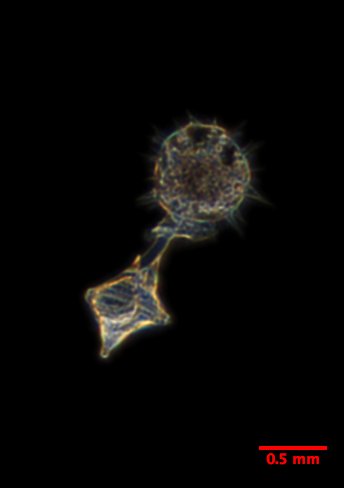Over the past month, the SPCP has been a dinner guest for a Protoperidinium feast! These small dinoflagellates have some fascinating table manners. Rather than ingesting their prey, they eat their food extracellularly. A hungry Protoperidinium will chemically sense a near-by cell and envelop it in a sticky sheet called a pallium or feeding veil. Once the prey is captured, the Protoperidinium secretes a digestive enzyme into the sac. The predator breaks down the innards of the prey and ingests the bits. Finally, the Protoperidinium retracts the veil, leaving behind any material it could not digest. In lab studies, the whole process takes about 20-30 minutes depending on the size of the prey (though one observed feeding took nearly two hours). According to a 1984 study by Gaines and Taylor, Protoperidinium can capture cells up to 10 times its’ diameter! That would be kind of like seeing a 6 foot tall man eating a 60 foot long burrito.
This image was captured by the SPCP on Friday September 16th at about 5 PM Pacific time. The Protoperidinium is the diamond shaped cell toward the bottom left. Notice the feeding veil extending to the prey cell. Check out the gallery for more images!
